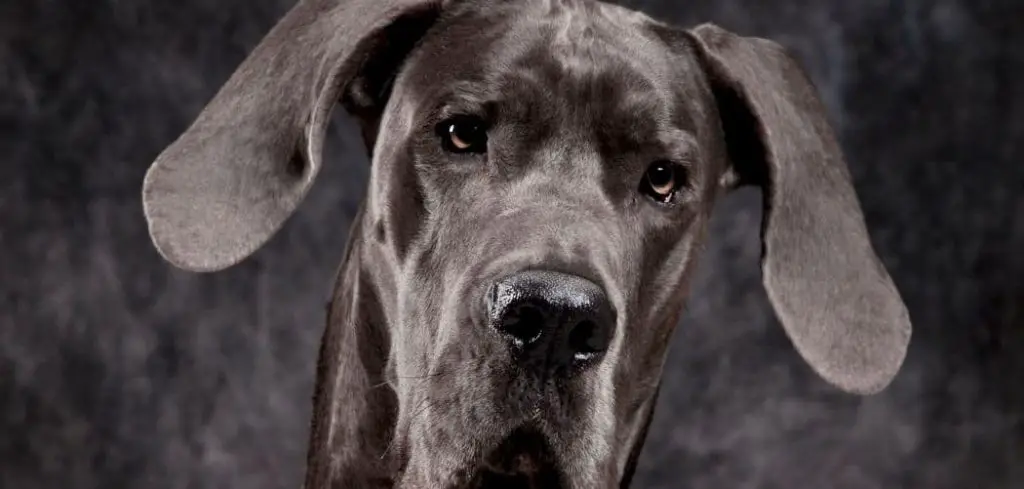When an old dog starts panting heavily and drinking lots of water, it can be alarming for any owner. While these symptoms may seem minor at first, they often point to underlying health conditions that need attention.
We outline the common causes of an old dog panting and drinking lots of water, what you can do at home, and when to seek veterinary help.
Old Dog Panting and Drinking Lots of Water — Why It Happens
Panting and excessive thirst in older dogs usually point to changes in the body caused by age-related health problems. Conditions like kidney disease, diabetes, Cushing’s disease, or even pain and stress can trigger both heavy breathing and increased water intake.
Sometimes, heatstroke or respiratory issues may also play a role, especially in older dogs that struggle to regulate body temperature.
Because these symptoms overlap with many serious illnesses, it’s important not to dismiss them.

Old Dog Panting and Drinking Lots of Water: Common Causes
Kidney Disease
Kidney disease is one of the most common conditions in aging dogs. When the kidneys lose their ability to filter waste properly, the body compensates by producing more urine. This makes dogs drink more water.
The stress of toxin buildup can also cause panting and restlessness. Other signs might include weight loss, bad breath, and vomiting. Left untreated, kidney disease can quickly become life-threatening in senior dogs.
Read more: Old Dog Breathing Heavy and Not Eating (Here’s what it could mean)
Diabetes
Diabetes often develops in older dogs and is closely linked with excessive thirst. The body struggles to regulate blood sugar, leading to increased urination and water consumption.
Panting may result from high blood sugar levels or secondary infections, which are more common in diabetic dogs. Owners may also notice weight loss despite a good appetite, or sometimes increased hunger.
Without proper treatment, diabetes can lead to severe complications like diabetic ketoacidosis, which requires immediate veterinary care.
Cushing’s Disease
Cushing’s disease occurs when the adrenal glands produce too much cortisol. This hormone imbalance causes panting, excessive thirst, and frequent urination.
Older dogs with Cushing’s may also develop a pot-bellied appearance, thinning skin, or hair loss. The condition progresses slowly, making it easy to overlook in its early stages.
Although not usually an emergency, untreated Cushing’s can cause long-term organ damage, so veterinary care is essential.
Heart Disease
Heart disease is common in senior dogs and can explain both panting and changes in water intake. When the heart struggles to pump efficiently, fluid may build up in the lungs or abdomen, making dogs pant heavily.
Increased thirst sometimes develops as the body tries to balance fluid levels. Other warning signs include coughing, fatigue, and reduced exercise tolerance.
Heart disease requires ongoing management, and early detection helps improve a dog’s quality of life.
Heatstroke
Even mild overheating can be dangerous for an older dog. Seniors have less ability to regulate body temperature, making them prone to panting when overheated.
Heatstroke also triggers dehydration, leading to excessive water drinking once the dog has access to fluids. This condition is a medical emergency, as overheating can quickly cause organ failure.
Signs such as drooling, lethargy, and collapse mean immediate veterinary attention is needed.
Pain or Anxiety
Older dogs often experience pain from arthritis or other chronic conditions. Panting is a common sign of discomfort or stress, and some dogs drink more water when they feel anxious or unsettled.
This behavior may not always indicate a medical crisis, but chronic pain or anxiety still needs veterinary evaluation. Managing discomfort improves both health and quality of life.
What to Do If Your Old Dog Is Panting and Drinking Lots of Water
At home, start by making sure your dog always has access to fresh, cool water. Prevent overheating by keeping your senior dog in shaded or air-conditioned areas, especially during warm weather.
Monitor how often your dog is panting and drinking. Keeping a simple log can help your vet identify patterns that point to a specific condition.
If diabetes or kidney disease is suspected, maintaining a stable diet and limiting treats can help until you receive veterinary guidance.
Never withhold water, even if your dog is drinking excessively, as dehydration can worsen underlying problems.
Providing a calm, stress-free environment also helps if panting is linked to pain or anxiety. Comfortable bedding, gentle exercise, and regular rest breaks are important for senior dogs.
When to Call or Visit Your Vet
Seek veterinary care right away if your dog shows additional symptoms such as vomiting, diarrhea, weakness, coughing, or collapse. These can signal urgent conditions like kidney failure, heart disease, or heatstroke.
If your dog’s thirst seems unquenchable, or the panting is constant and unrelated to exercise or heat, schedule a checkup promptly. Excessive drinking in older dogs almost always indicates a medical issue.
Even if the symptoms appear mild, it’s better to have your dog evaluated early. Blood tests, urine analysis, and imaging can help identify the cause and allow treatment before the condition worsens.
Read more: Old dog excessive panting and pacing (Here’s why)
Key Takeaway
Panting and drinking lots of water in an old dog should never be brushed off as normal aging. These symptoms are often linked to serious conditions like kidney disease, diabetes, or Cushing’s disease.
Providing water, keeping your dog cool, and reducing stress at home can help, but veterinary care is essential for long-term management.
Early intervention offers the best chance of keeping your senior dog comfortable and healthy.
If your old dog is showing these signs, don’t wait—schedule a vet visit to get answers and the right care plan.
